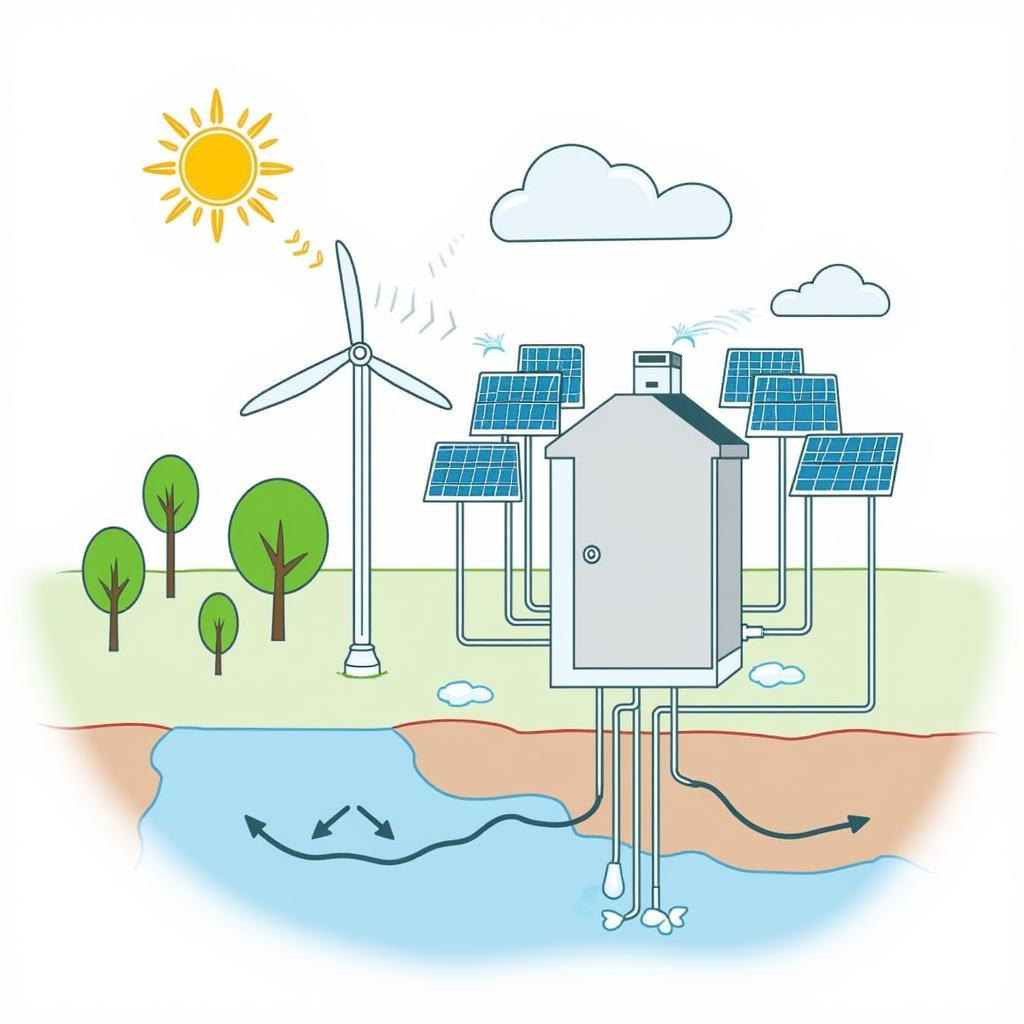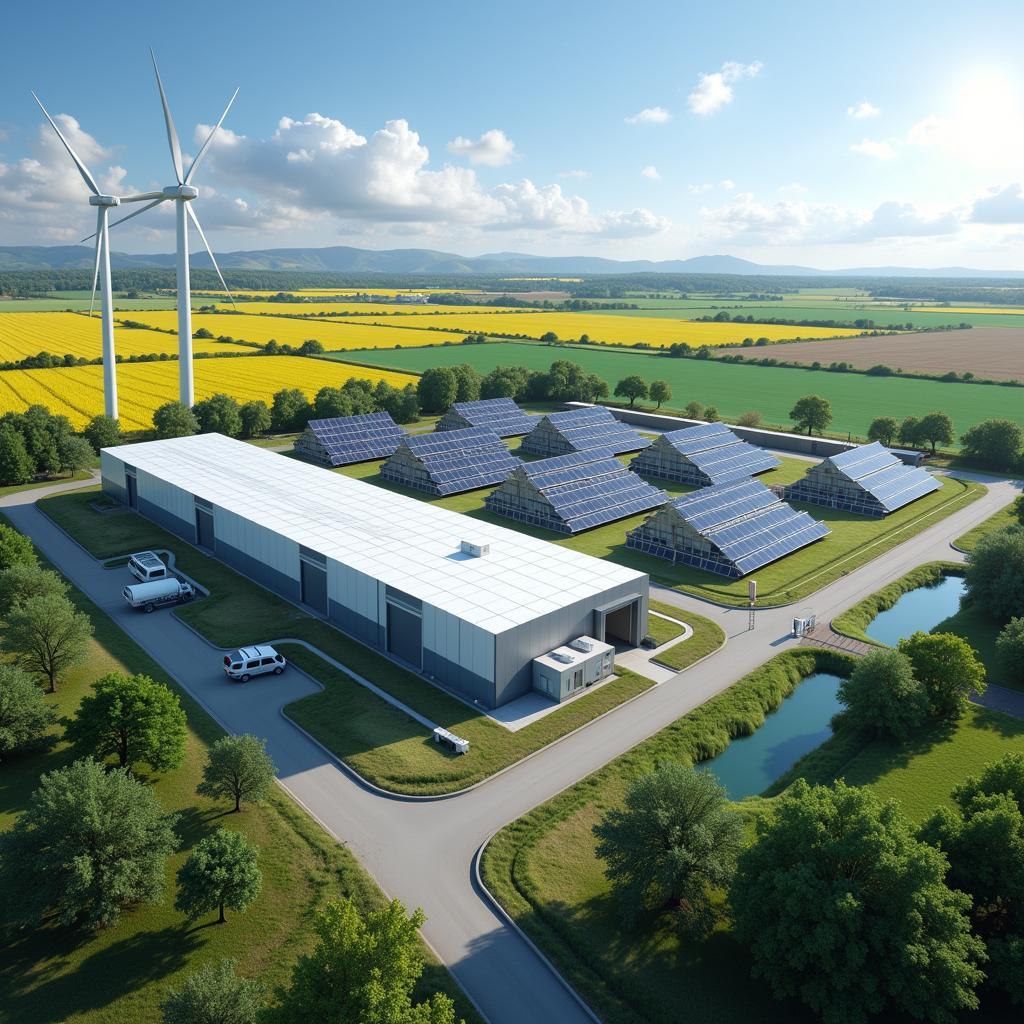The term “Grid Sink” might sound like something out of a sci-fi movie, but it’s actually a powerful tool used in various industries, from electrical engineering to renewable energy. This comprehensive guide will delve into what a grid sink is, how it works, its various applications, and its potential impact on the future of energy.
What is a Grid Sink?
In the simplest terms, a grid sink is a device or system that absorbs excess electricity from the power grid. Imagine a sink in your kitchen that drains away excess water; a grid sink does the same for electricity. When there’s a surplus of power generation, perhaps from renewable sources like solar or wind, the grid sink steps in to prevent instability and potential damage to the grid.
 Illustration of a Grid Sink System
Illustration of a Grid Sink System
How Does a Grid Sink Work?
The functioning of a grid sink depends on the specific technology used. Here are a few common methods:
-
Resistive Loads: These are the simplest forms of grid sinks. They work by converting excess electricity into heat, which is then dissipated. Think of it like an electric heater that turns on automatically when there’s a power surplus.
-
Pumped Hydro Storage: This method uses excess electricity to pump water uphill to a reservoir. When demand increases, the water is released downhill, passing through turbines to generate electricity.
-
Battery Storage: Grid-scale batteries are becoming increasingly popular as grid sinks. They store surplus electricity and release it when needed, offering a flexible and efficient way to balance the grid.
-
Hydrogen Production: Excess electricity can be used to split water into hydrogen and oxygen. The hydrogen can be stored and used later in fuel cells or other applications, providing a clean energy storage solution.
Applications of Grid Sinks
The growing need for grid stability and the increasing adoption of renewable energy sources have led to a wider application of grid sinks. Here are some key areas where they play a crucial role:
-
Integrating Renewable Energy: Solar and wind power are intermittent sources, meaning their output fluctuates depending on weather conditions. Grid sinks help smooth out these fluctuations by absorbing excess power when generation exceeds demand.
-
Enhancing Grid Reliability: By acting as a buffer against power surges and imbalances, grid sinks enhance the overall reliability of the electrical grid.
-
Improving Power Quality: Grid sinks can help maintain the desired voltage and frequency levels on the grid, improving the quality of power delivered to consumers.
 Grid Sink with Solar and Wind Farms
Grid Sink with Solar and Wind Farms
The Future of Grid Sinks
The future of grid sinks is closely intertwined with the future of energy. As we move towards a more sustainable and decentralized energy landscape, grid sinks will become even more crucial. Here are some potential developments:
-
Advanced Storage Technologies: We can expect to see the development of more efficient and cost-effective energy storage solutions, such as advanced batteries, compressed air energy storage, and thermal energy storage.
-
Smart Grid Integration: Grid sinks will become smarter, integrating with advanced grid management systems to optimize energy flow and enhance grid stability in real-time.
-
Demand-Side Management: Grid sinks will work in tandem with demand-side management strategies, encouraging consumers to shift their electricity usage to times when renewable energy generation is high.
Conclusion
Grid sinks are essential components of a modern and sustainable energy infrastructure. By absorbing excess electricity, they ensure grid stability, facilitate the integration of renewable energy sources, and pave the way for a more reliable and efficient power grid. As technology advances, we can expect grid sinks to become even more sophisticated, playing a pivotal role in shaping the future of energy.
For any assistance or inquiries, please contact us at Phone Number: 0902476650, Email: [email protected] or visit us at 139 Đ. Võ Văn Kiệt, Hoà Long, Bà Rịa, Bà Rịa – Vũng Tàu, Vietnam. Our dedicated customer support team is available 24/7.





